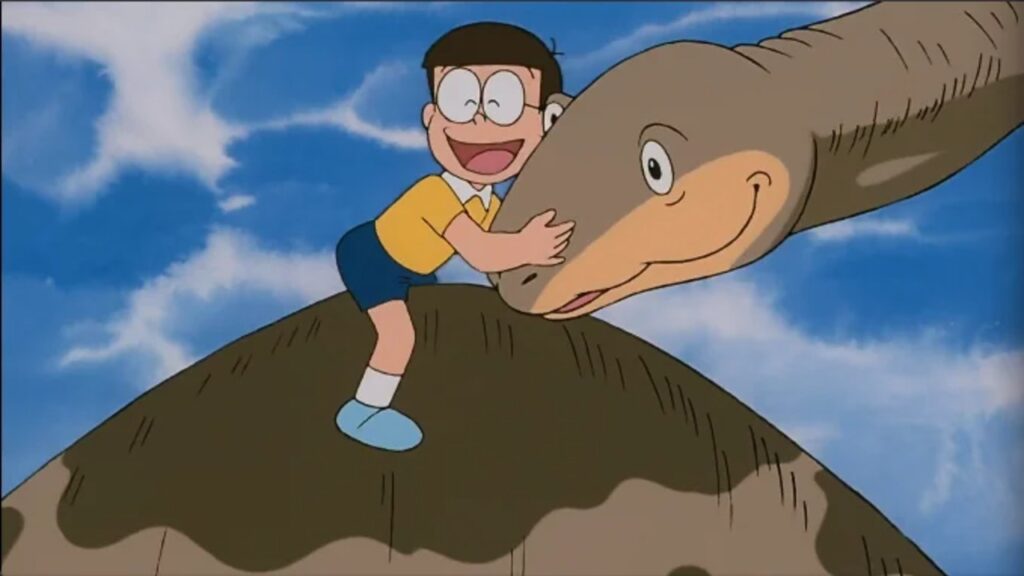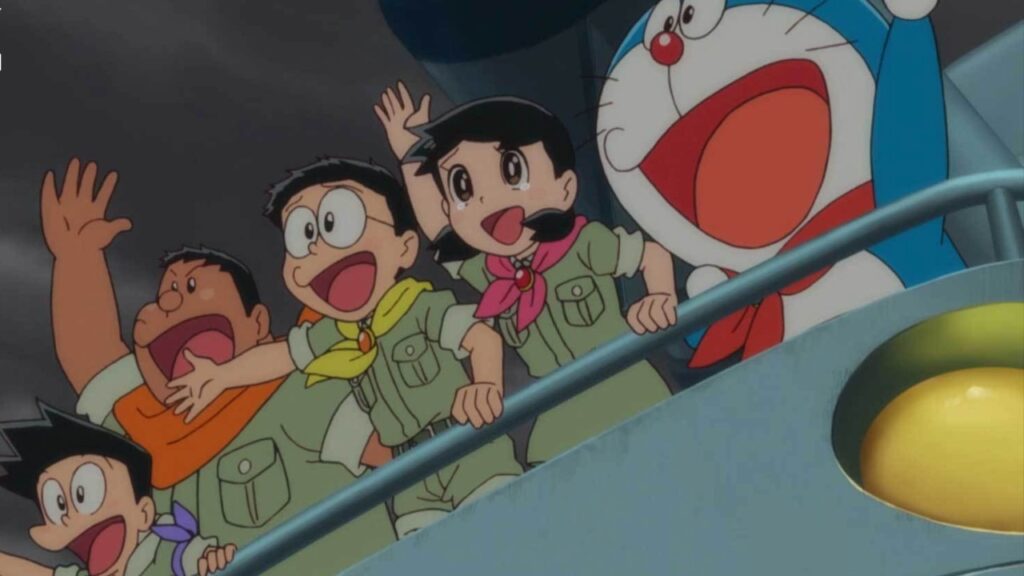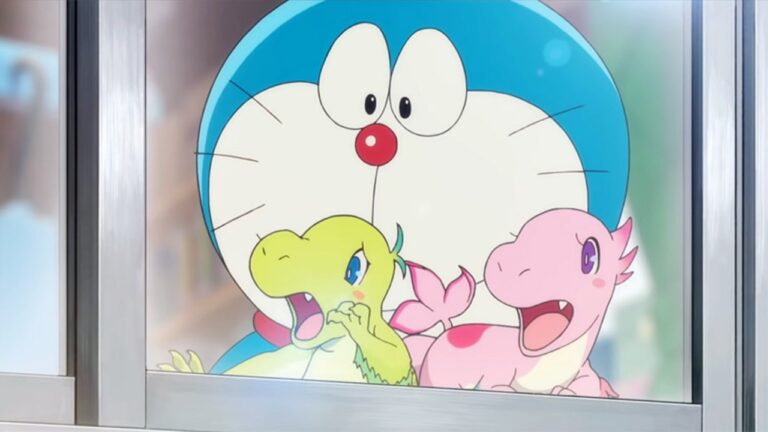When we talk about Doraemon, we talk about more than a blue robotic cat or a clumsy boy who relies heavily on futuristic gadgets. We talk about growing up, learning empathy, and discovering what it truly means to stand next to each other. The journey began in 1980 when ‘Doraemon: Nobita’s Dinosaur‘ was released, produced by Shin-Ei Animation and distributed by Toho. It became the very first feature-length Doraemon film, premiering on March 15, 1980. Four decades later, ‘Doraemon: Nobita’s New Dinosaur’ arrived in 2020, once again brought to life by Shin-Ei Animation as part of the franchise’s 50th anniversary celebration. Although its release was delayed by the pandemic, the film finally opened in Japan on August 7, 2020, carrying a special significance for those of us who grew up watching Nobita and Doraemon learn, stumble, and grow together.
Shin-Ei Animation’s roots go back to the 1960s, and the studio formally adopted its name in 1976. Since then, it has remained the creative home of Doraemon, nurturing its stories across television and film. When we look at both Nobita’s Dinosaur and Nobita’s New Dinosaur, they feel like two points connected by a long thread of memory. The newer film does not simply repeat the old one; instead, it reflects upon it, showing us how time changes both stories and the people who experience them.
From Piisuke to Kyu and Myu, Doraemon’s Dinosaur Stories Evolved with Time

In the 1980 original, the story begins with a small moment of insecurity. Nobita feels left out when Suneo proudly shows a fossil he got from the United States. That moment of jealousy pushes Nobita to prove himself, leading to his discovery of a mysterious egg. When the egg hatches, he finds a tiny Futabasaurus, a genus of plesiosaur found in Japan, and names it Piisuke. What follows is not just an adventure but a journey of love and responsibility. Nobita nurtures Piisuke as if he were family, learning how to care for another being with patience and heart. But when greedy hunters arrive, threatening Piisuke’s life, Nobita and his friends travel back in time to return him to his rightful era. The final goodbye between Nobita and Piisuke is one of the most emotional moments in Doraemon history, as it prioritizes genuine feeling over cinematic scale, showing that sometimes, when you love someone or something, you should let them go.
When we move to the 2020 film, we see the same emotional foundation reshaped for a new age. This time, Nobita discovers twin dinosaurs, Kyu and Myu, and raises them with the same love he once gave to Piisuke. Yet this version of the story feels more self-aware, as if Nobita himself has grown along with the audience. He is still clumsy, still uncertain, but his heart understands that caring for something fragile comes with difficult choices. When he realizes that Kyu and Myu cannot survive in the modern world, he must find the strength to do what is right, even though it means facing heartbreak again. In this story, courage does not come from power or victory but from persistence and kindness.
One of the most touching moments comes near the end of the film when Nobita and Kyu fall into the sea and are saved by a Futabasaurus. For fans who remember the first movie, that creature feels like a reflection of Piisuke, as if the past itself has reached forward to save Nobita. It is not just a coincidence, because it feels like a deliberate gesture or a tribute. For long-time fans, this connection carries deep meaning because it turns nostalgia into something active and alive rather than distant and static.
A Bridge Between Eras

Both films balance small, personal emotions with grand adventures. The 1980 film begins with a child’s curiosity and grows into a story about love and sacrifice. The 2020 film follows the same rhythm but deepens it, exploring community, ethical choices, and the impact of human action. The dinosaur hunters once again stand for greed and selfishness, while Nobita and Doraemon represent care, empathy, and hope for the future. This contrast gives each rescue scene its weight and reminds us that kindness is often the most powerful act of all.
It is also important to remember the context in which Nobita’s New Dinosaur was made. The film was released during Doraemon’s 50th anniversary year, a milestone that shaped both its tone and its purpose. It feels like a tribute not only to the story that started it all but also to the generations of fans who carried those lessons forward. The movie becomes a bridge between eras, uniting the gentle moral world of the original creator, Fujiko F. Fujio, with the audience that grew up loving his work. By including the spirit of Piisuke, the film speaks directly to those of us who once cried at that farewell and still remember what it felt like.
When we honestly think about it, both stories show that Nobita’s growth is not about sudden change or heroism. It is about making small, honest choices that slowly shape who we are. He learns that love sometimes means letting go and that true strength lies in compassion. The appearance of the Futabasaurus in the 2020 film is not just a nostalgic image but a reminder that some friendships and lessons never fade away. For those of us who have followed Nobita’s story since childhood, it feels like a quiet message from the past, asking us to hold on to the goodness we once believed in.




